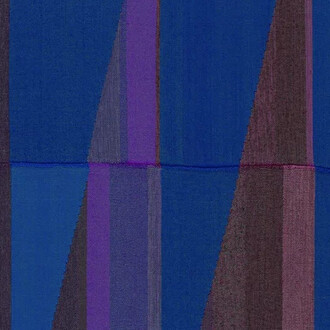Benny Van den Meulengracht-Vrancx (b. 1989) is an artist whose research begins with a keen observation of the order of things. A serendipitously found object, a fragment, or a verse can spark a larger process and become a leitmotif in his work. In recent years, the artist has developed a personal lexicon – a visual vocabulary that underpins his evolving artistic practice. Projects such as Through my eyes and Ai trace the intricate, ever-shifting relationships between words and things, combining poetic sensibility with conceptual clarity. Instead of working anti-retinally in the Duchampian sense, Van den Meulengracht-Vrancx takes a semiotic approach. He is a semionaut (Bourriaud), navigating the sea of signs that surrounds us. Spanning ceramics, collage, drawing, and poetry, his works reveal a gestural elegance informed by traditional Japanese aesthetics alongside references to anime and gaming culture. This hybridity is not mere eclecticism; it is the signature of a steady hand – or pointing finger.
The current exhibition ACT exemplifies this approach. It centers on five handmade, monochrome flags, each bearing the three letters of a speech act – an imperative stripped of its exclamation mark. Upon closer inspection of the design, one notices that the artist tilted the letter C slightly, disrupting the rigor of its modernist typeface (possibly Futura, the Bauhaus-inspired font also found on the Moon). This subtle alteration gives the letter sculptural tension and a touch of playfulness, forming an arc that recalls Richard Serra’s Tilted arc (1981–1989). Like Serra’s controversial sculpture, an arc that ‘acted’ upon public space by dividing a Manhattan square, these flags equally interrupt visitors’ movement. They are performative objects bearing hesitant speech acts, containing the potential of action within them yet remaining poised, waiting to be activated.
The themes of time and performativity recur in Hold my candle, a solemn sculpture representing a candle holder. It is constructed from a wooden handle and a hand-hammered metal plate, and takes the form of a sword meant to be carried through the exhibition space. The piece incorporates elements of ritualism and role-playing, inviting visitors to assume the role of a guard, while emphasizing the intertwined acts of vigilance, waking and waiting.
At the other end of the exhibition, eight ceramic masks titled Broken, deformed, painful, unwearable provide a sculptural counterpoint. Initially modeled on the artist’s own head, the masks were then roughly altered to accentuate the tactile, pasty quality of the anthracite clay. The artist deliberately integrates errors, fragilities, and risks into the creative process. Once fired and finished with a glossy glaze, the masks become autonomous sculptural objects rather than theatrical attributes; only the frayed satin ribbons hint at their wearability. In Latin, persona referred to a theatrical mask, a device through which the actor’s voice would sound (per-sonare). This work evokes references from popular culture, ranging from the 1960 horror film Les yeux sans visage to Billy Idol’s eponymous 1980s power ballad, as well as the psychological thriller Vanilla sky (2001) and Almodóvar’s La piel que habito (2011). As always, the artist also draws inspiration from Japanese manga and video games, in which masks carry rich symbolic meaning.
Slices of life is an earlier installation that presents cross-sections or screenshots of video game environments, such as the recently released Monster hunter wilds, in which the artist meticulously crafts his own character or avatar. These digital images are then printed and folded over metal rods suspended from the ceiling, transforming them into three-dimensional forms that occupy the exhibition space.
The practice of converting media across formats is further explored in Actor, a limited-edition silkscreen print based on the Joker playing card. By omitting the card indices and presenting only the central image rendered in three colors, the work exemplifies the artist’s editorial and curatorial approach of cutting, cropping, reshuffling and recomposing, much like a deejay. This method reflects Van den Meulengracht-Vrancx’s way of seeing as much as thinking, carefully probing the boundaries of what can be said and what can only be shown.
(Text by Pieter Vermeulen, November 2025)













